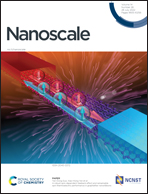Ni single atoms supported on hierarchically porous carbonized wood with highly active Ni–N4 sites as a self-supported electrode for superior CO2 electroreduction†
Abstract
Powdery N-doped carbon-supported single-atom catalysts (SACs) can be prepared on a large scale and are highly selective in converting CO2 to CO, but their practical application is restricted by their powdery texture. Herein, we report Ni single atoms supported on hierarchically porous N-doped carbonized wood (Ni SAs-NCW) as a self-supported electrode for efficient and durable CO2 electroreduction. The porous NCW matrix possesses an abundance of open aligned microchannels that allow unimpeded CO2 diffusion and electrolyte transportation while the uniformly dispersed Ni SAs in the NCW matrix in the Ni–N4 configuration afford ample highly active sites for CO2 electroreduction. This Ni SAs-NCW electrode exhibits a high CO2-to-CO faradaic efficiency (FECO) of 92.1% and a CO partial current density (jCO) of 11.4 mA cm−2 at −0.46 V versus the reversible hydrogen electrode (RHE) and maintains a stable FECO and jCO over a period of 9 h of electrolysis. This work provides an effective strategy to develop efficient SACs with potential to be integrated into flow cell systems for large-scale CO2 reduction.



 Please wait while we load your content...
Please wait while we load your content...